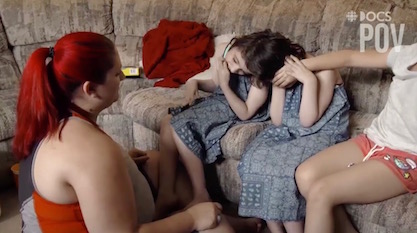 Neuroscience & Mind
Neuroscience & Mind
Brain = Mind? Craniopagus Twins Argue Otherwise

You can watch a CBC TV documentary on YouTube, “Twin Life: Sharing Mind and Body,” about craniopagus twins. They are joined at the head, and specifically, at their brains. The title of the documentary is wrong, though. As Denyse O’Leary points out at Uncommon Descent, Tatiana and Krista Hogan of British Columbia share a range of senses and can move parts of each other’s bodies, but their minds, their personalities, are separate.
The CBC explains:
The structure of the twins’ brains makes them unique in the world. Their brains are connected by a thalamic bridge, connecting the thalamus of one with that of the other. The thalamus acts like a switchboard relaying sensory and motor signals and regulating consciousness.
“Twin Life” is from 2014, and the CBC follows up now with “Inseparable,” which captures the pair at age 11. (You can only watch it online in Canada.) To be honest, I’m a little bit squeamish about this sort of thing, but it speaks to me because we have 10-year-old twin boys.
Neurological studies have stunned the doctors. Tatiana can see out of both of Krista’s eyes, while Krista can only see out of one of Tatiana’s. They also share the senses of touch and taste and the connection even extends to motor control. Tatiana controls 3 arms and a leg, while Krista controls 3 legs and an arm.
Amazingly, the girls say they also know one another’s thoughts without needing to speak. “We talk in our heads” is how they describe it.
Our twins, entirely separate physically and not identical, with different interests, mannerisms, and much more, likewise share a common understanding, though I don’t think it extends to knowing each other’s thoughts. Not unusual for twins, when in a certain playful mode, they may speak with each other in a way that others find difficult or impossible to understand. They also behave quite differently depending on whether the other is in the same room (or car) or not. Their “apart from each other” personalities are very distinct, but when together, the raucous, shared “twin personality” can predominate, especially when they’re bored. Over the summer we sent them to separate sleep-away camps, at staggered dates, and they were apart from each other for weeks, by design. The “twin personality” was absent the whole time.
But here’s the main point. Insofar as the mind subsumes the personality, these girls do not share a mind. Though together all the time, by physical necessity, their spirits are distinct, with “very different personalities”:
Despite their unique connection, the twins remain two distinct people. Tatiana is talkative, outgoing and high-strung, while Krista is quieter, more relaxed and loves to joke. But she has a temper and can be aggressive if she doesn’t get her way.
So, while sharing brains, they do not share minds. Meanwhile our twins, with no physical connection, sometimes do seem to share a mind. Of course, I understand that they don’t really, but observing twins tends to refute the rigid materialist equation of mind with brain.
